The lesser albatross belong to the genus Thalassarche. They are more commonly referred to as mollymawks.
Listed below are the ten varieties of the smaller lesser albatross (mollymawk) species that can be seen in the waters off Kaikoura.
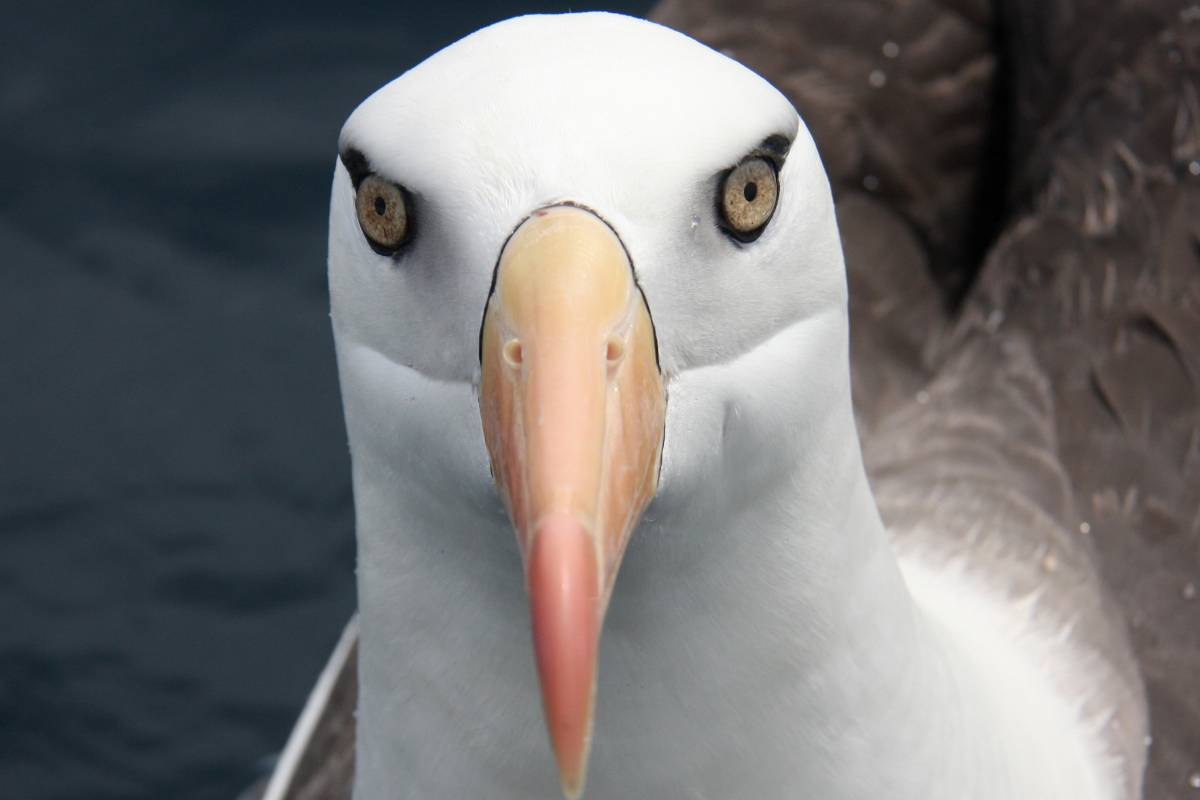
Campbell Island Albatross
Endemic to the Campbell Islands. Not as common a visitor to Kaikoura waters as the black-browed.
There are 2 species of black-browed mollymawks which are almost identical in flight. They are distinguished from one another by eye colouration. The Campbell Island mollymawk (Thalassarche impavida) has a distinctive pale yellow iris whilst the Sub-Antarctic black-browed (Thalassarche melanophris) has a dark coloured eye. They feed aggressively around fishing boats for scraps of food. Black-browed mollymawks are especially vulnerable to being caught on the baited hooks from longliners.
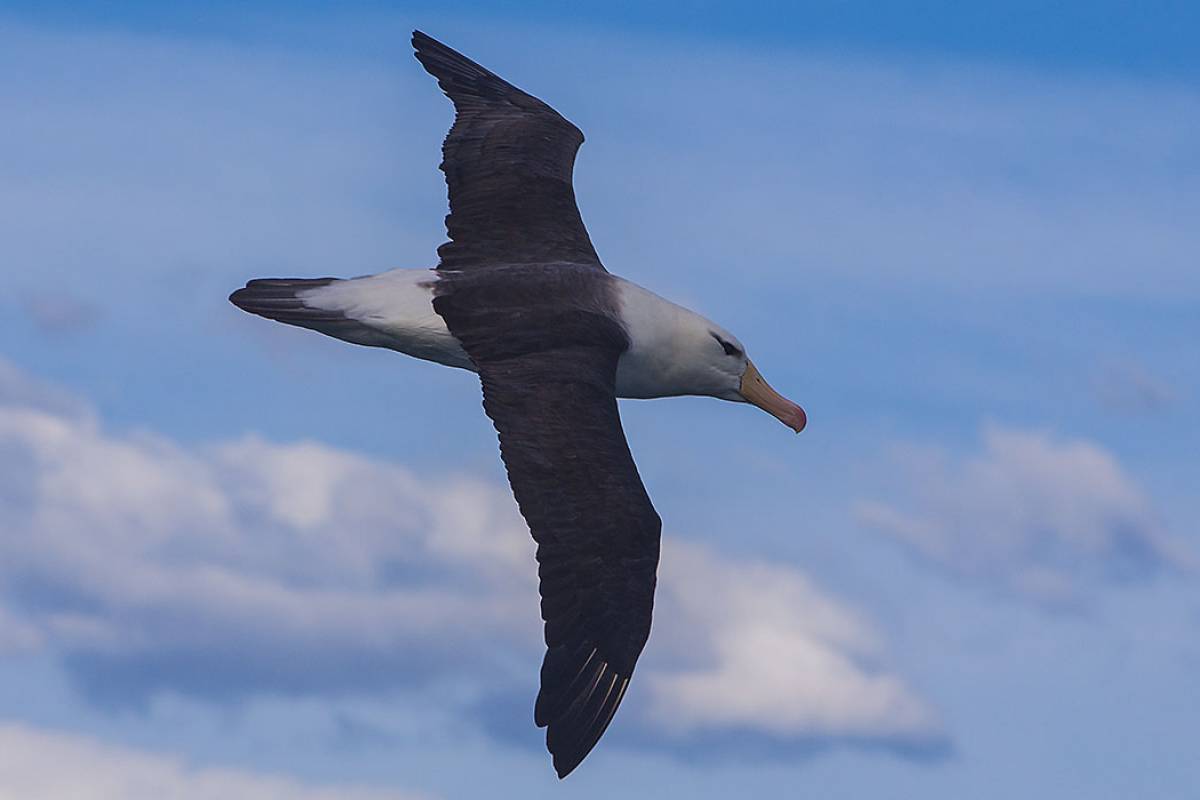
Subantarctic Black-browed Albatross
More common in Kaikoura waters than the Campbell, however this species is predominantly sighted during the winter months.
The subantarctic black-browed mollymawk (Thalassarche melanophris) is circumpolar in distribution with main breeding sites in the Falkland Islands, South Georgia and Chile, with 70% of the breeding population occurring in the Falkland Islands. Ranges widely through southern oceans and into subtropical waters. There are 2 species of black-browed mollymawks which are almost identical in flight. They are distinguished from one another by eye colouration. The Campbell Island mollymawk has a distinctive pale yellow iris whilst the subantarctic black-browed (Thalassarche impavida) has a dark coloured eye.
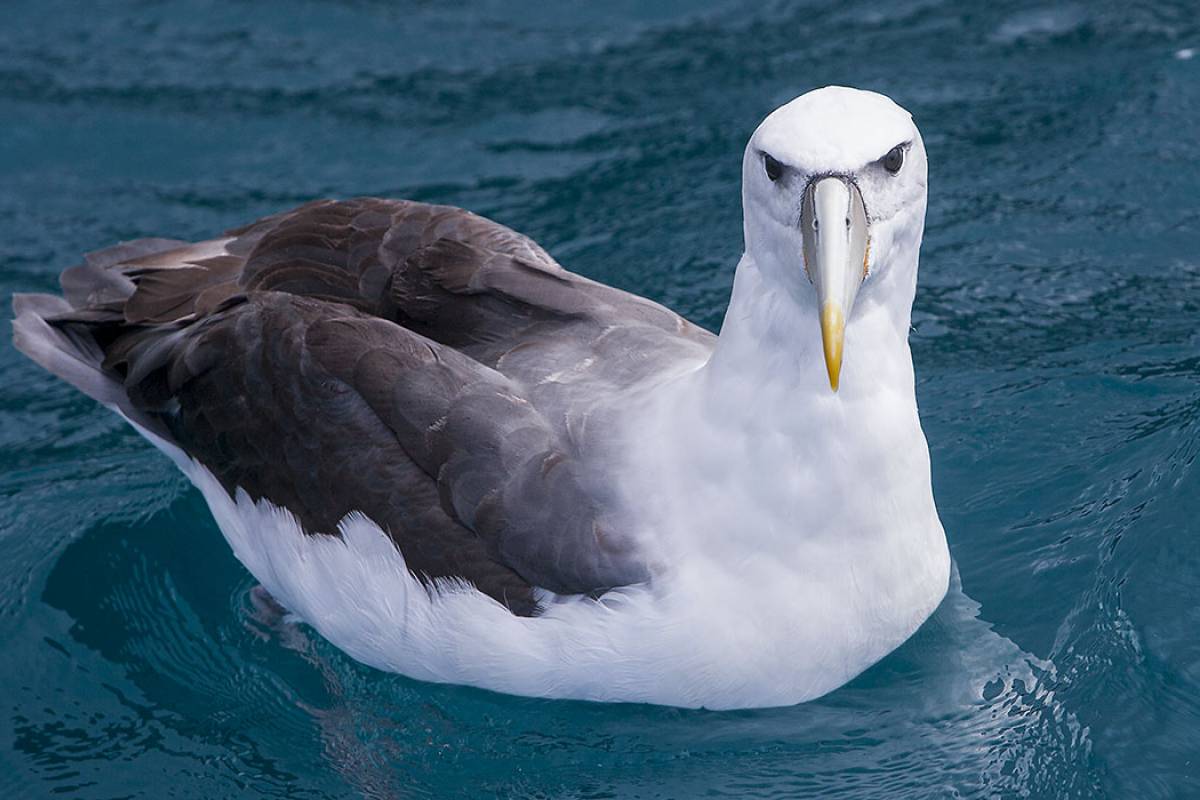
New Zealand White-capped Albatross
It is very similar to the shy mollymawk, which is endemic to three islands off Tasmania.
The New Zealand white-capped mollymawk (Thalassarche cauta) was formerly a subspecies of the “shy” group, this species is now recognised as a distinct species. Endemic to New Zealand with 99% of the total population breeding in the Auckland Islands. It’s the largest of the smaller albatross (mollymawks) weighing up to 5 kilograms. Attracted to offal from fishing boats, it is understood that fish processing waste comprises a large component of their diet. They also feed on fish and squid by surface seizing, but can also undertake shallow dives.
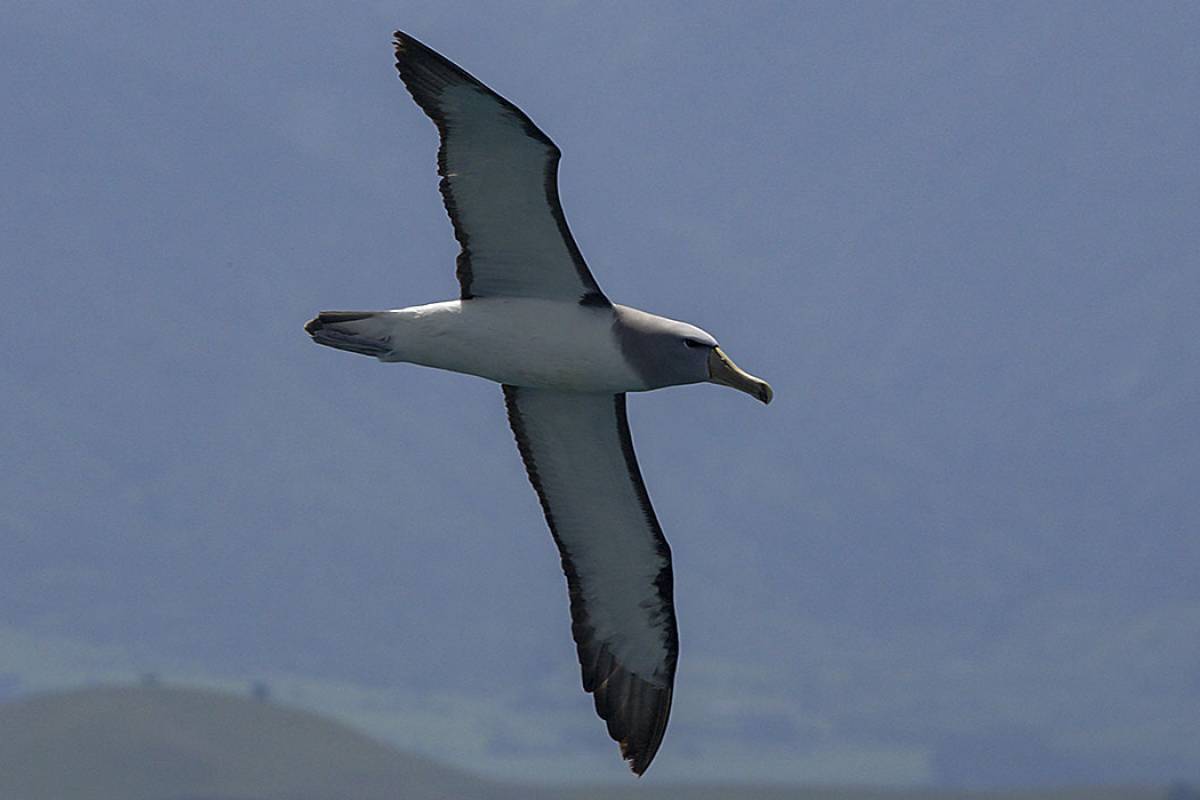
Salvin's Albatross
Salvin’s mollymawks are the least studied albatross species and have also suffered high mortality rates from longline and trawl fishing.
Formerly a subspecies of the “shy” group, the Salvin's mollymawk (Thalassarche salvini) is now recognised as a distinct species. 99% of the total population breeds on the Bounty Islands, a cluster of windswept rocks about 300 miles to the east of the South Island. There is also a small colony, which breed on the Snares, situated about 200 km south-west from the bottom of the South Island. Young Salvin's mollymawks fly to the east of New Zealand and spend several years off the west coast of South America. Most Salvin’s mollymawks leave Kaikoura at the end of summer and are assumed to migrate to South America following the Humboldt Current System, although a few stragglers are sometimes observed in Kaikoura during winter.
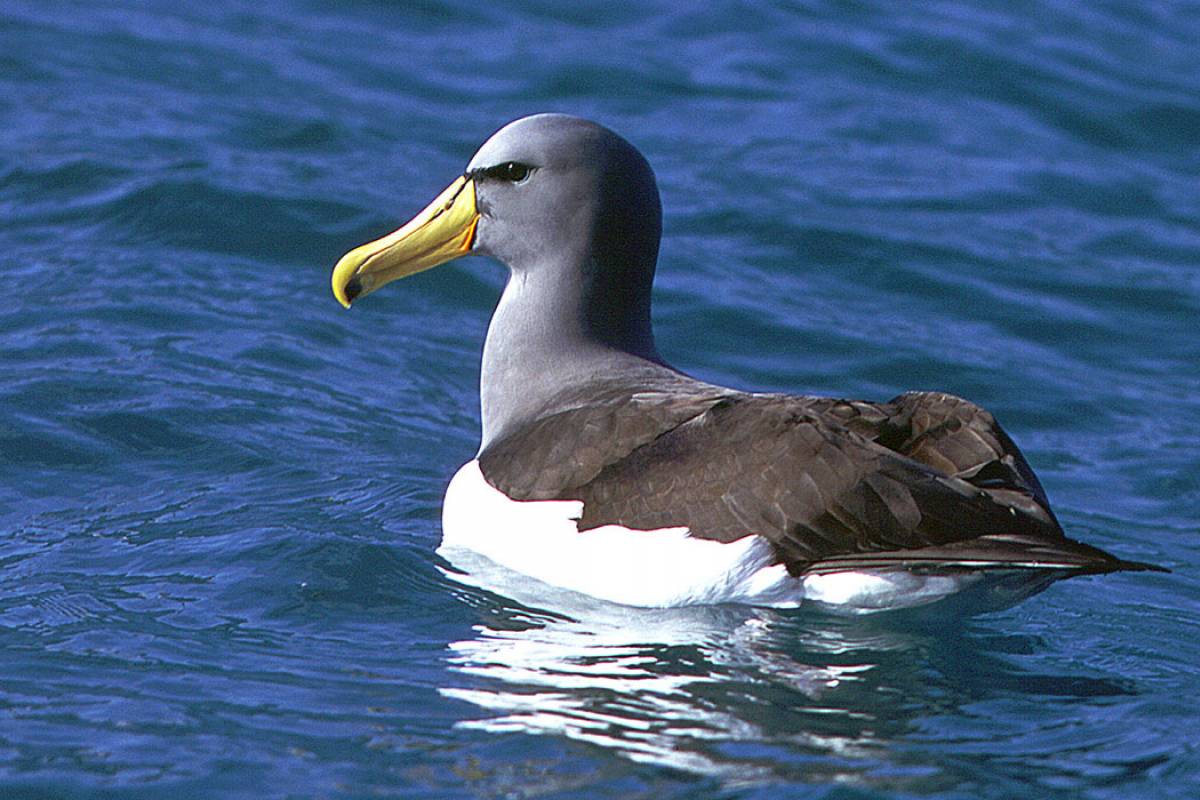
Chatham Island Albatross
This species can be easily identified at sea with its yellowish beak and dark grey head.
Formerly a subspecies of the “shy” group, the Chatham Island mollymawk (Thalassarche eremita) is now recognised as a distinct species. One of the least common albatrosses of the Southern Ocean, this vulnerable mollymawk has a very small breeding range; breeding only at one site known as “The Pyramid” in the Chatham Islands, located to the east of New Zealand. The Pyramid is a large rocky outcrop with approximately 4,500 breeding pairs. Over the last few years a Chatham Islands albatross has been seen on occasions in Kaikoura towards the end of summer; however it’s a very rare visitor as most birds fly east of the Chatham’s to the coast of South America.
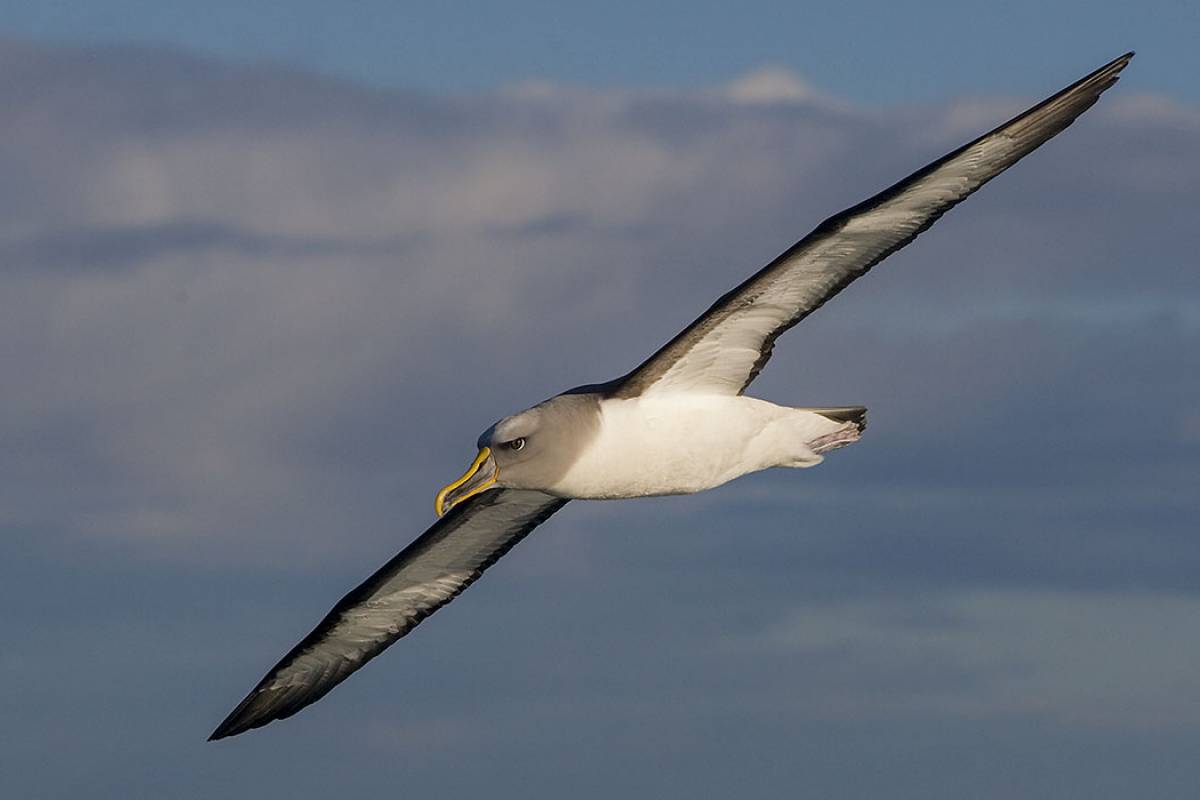
Buller's Albatross
Buller’s mollymawks are frequently observed in Kaikoura throughout the winter months, but are notably absent during the summer months during their breeding season, when they are more likely to forage closer to their breeding colonies.
The Buller’s mollymawk (Thalassarche bulleri) is endemic to New Zealand and breeds in 4 main colonies on the Snares Islands, and Solander Islands in the south, the Forty Fours and the Sisters in the Chatham Islands (to the east of New Zealand) and Rosemary Rock in the Three Kings Islands in the north. The highest concentration of breeding birds occurs in the Forty Fours in the Chatham Islands.
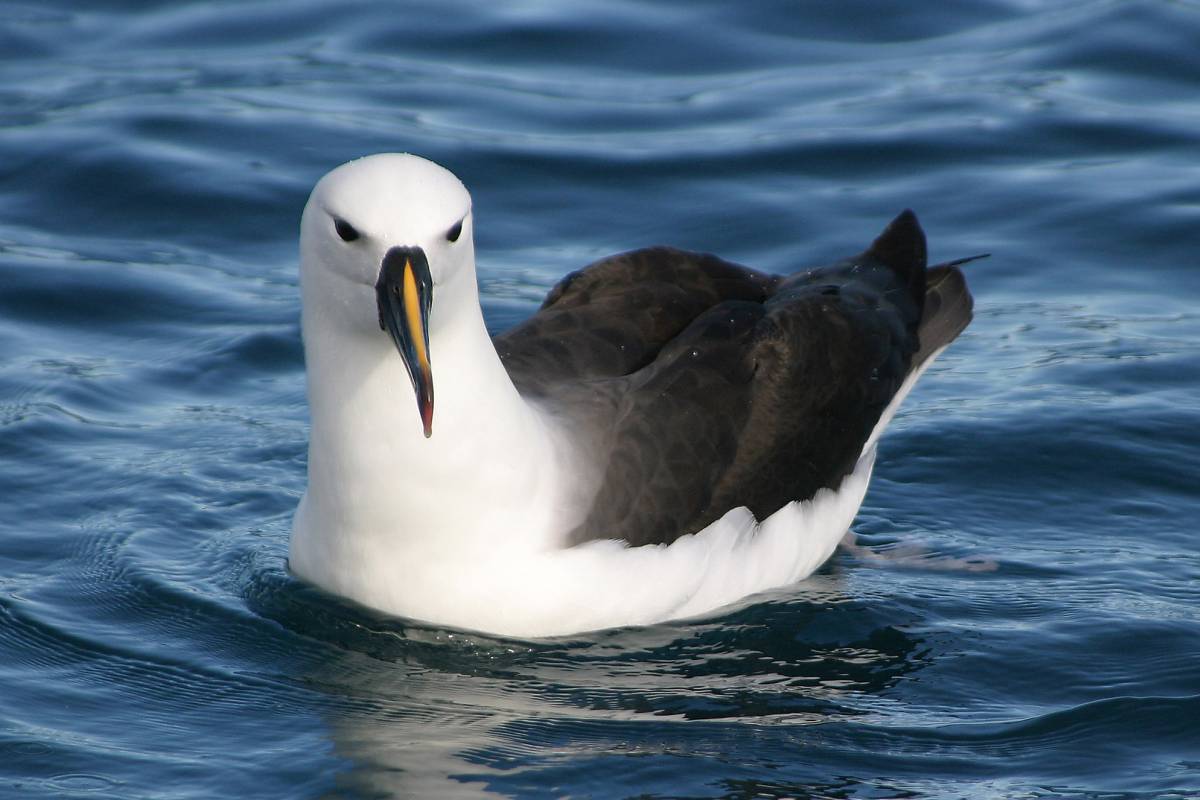
Indian Ocean Yellow-nosed Albatross
The smallest species of mollymawk weighing about 2.5 kilograms. Breeds in the Sub-Antarctic waters of the Atlantic and Indian Oceans. Has a distinctive yellow line along the top of the beak.
The Indian Ocean yellow-nosed mollymawk (Thalassarche carteri) has been split into 2 different species, Atlantic yellow-nosed (Thalassarche chlororhynchos) and the Indian yellow-nosed (Thalassarche carteri). The Indian Ocean yellow-nosed mollymawk breeds in the Sub-Antarctic waters of the Atlantic and Indian Oceans. The Atlantic yellow-nosed breeds on Gough and the Tristan de Cunha Islands in the South Atlantic. Both species are a rare visitor to the Kaikoura region in the spring with only the occasional bird being seen.
Recent Bird Sightings
With around 150 species of birds recorded here so far, Kaikoura is one of New Zealand's top birding destinations. The wonderful array of seabirds just offshore are the jewel in the crown with five varieties of Great Albatross, nine varieties of the smaller Lesser Albatross, seven varieties of Shearwaters, fourteen Petrel varieties, and several other seabird varies such as Shags, Prions, Penguins, Gulls and Terns.